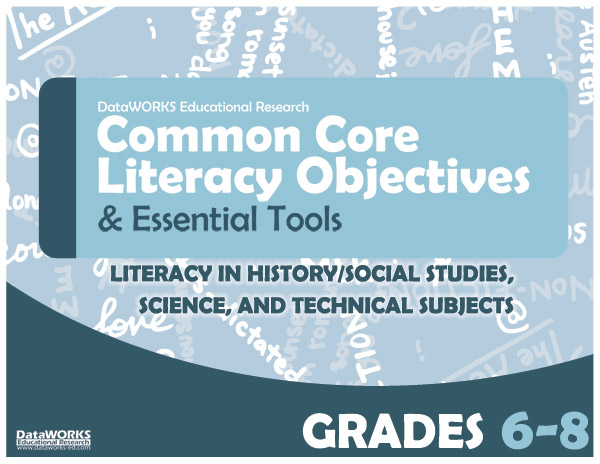Literacy: The Shifts
Imagine this scenario: You are a 6th grade social studies teacher. Your principal visits your classroom and asks you how you are meeting the new literacy standards promoted by Common Core. Perhaps your jaw drops, and then you stumble out a few words about helping them read and write. “Well, check it out, and show me the next time I come in,” she says.
Now, what do you do? That’s the purpose of this series of blog posts. We’ll give you an overview and specific tools you can use to meet your principal’s request.
The Common Core State Standards are primarily for English and Math. But, other subject area teachers were not left out. A significant part of Common Core, one which is often overlooked, is the new Standards for Literacy Practice (SLPs).
The SLPs are intended to provide guidelines for subject area teachers, such as science, history, and technical subjects, to share the responsibility for reading, writing, listening, and speaking. This supports the idea that literacy can be encouraged and promoted throughout the school day. It is also based on extensive research that establishes the need for students to be proficient in reading complex informational text. That kind of reading is the responsibility of the subject area teachers.
In fact, the standards advocate for 50% of reading to be informational text in grade 4, 55% in grade 8, and 70% in grade 12. In addition, writing should similarly shift its focus to persuasive or informative/explanatory text. The goal is for students “to develop mutually reinforcing skills and exhibit mastery of standards for reading and writing across a range of texts and classrooms.”
In this blog, I will identify the six major shifts that are encouraged by these Standards for Literacy Practice. In future blogs, I will describe detailed techniques that subject area teachers can use to meet these standards and their required shifts.
Shift 1—Vocabulary
Students need to build their vocabulary so they can access more complex texts. That means teachers should focus on commonly found words (like theory, principled, discourse) and less on labeled terms (like homonym, archipelago, or neoclassical).
Shift 2 – Balance between informational and literary texts
The standards call for more balance, which in practice means reading more informational text. This is how students access data about the world in science, social studies, and more.
Shift 3 – Build knowledge in the disciplines
Essentially, this is the encouragement for subject area teachers to participate in the drive for literacy. It is considered a “shared responsibility.”
Shift 4 – Read complex text
This means the teacher should guide the students in reading, where possible, the original texts around which the instruction is centered. Classes should spend more time doing a close and careful reading of the text. Teachers can also help below-grade-level readers with specific techniques to help them succeed with these texts.
Shift 5 – Text-based answers
Subject area teachers often have discussions of the issues in class, but now they are encouraged to focus the talk on evidence from the text. This will help students make text-based arguments when they speak or when they write.
Shift 6 – Write from sources
The standards encourage subject area teachers to have their students write papers that respond to the facts and ideas presented in text. Writing should emphasize evidence from the text rather than personal opinion or experience.
In addition, research and media skills are embedded throughout the standards, and subject area teachers can build upon these skills to achieve these literacy goals.
This interdisciplinary approach to literacy is designed to better prepare students for the language-rich world in which they will be working during college and career.
Next time we’ll look at specific ways that subject area teachers can build vocabulary as noted in Shift 1.

DataWORKS offers a unique guidebook where all these standards are broken down into specific Learning Objectives with Teaching Tips. Check it out to ease your learning curve. If you want to view the specific Standards for Literacy Practice, click these links:
History & Social Studies Grades 6-8
History & Social Studies Grades 9-10
History & Social Studies Grades 11-12
Science & Technical Subjects Grades 6-8
Science & Technical Subjects Grades 9-10
Science & Technical Subjects Grades 11-12




